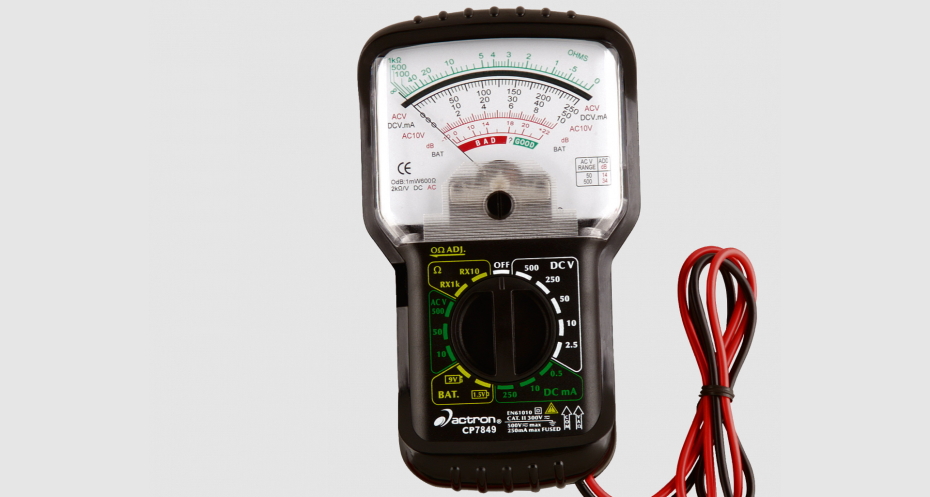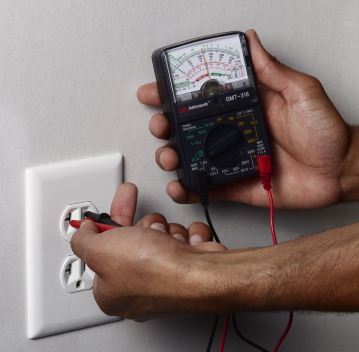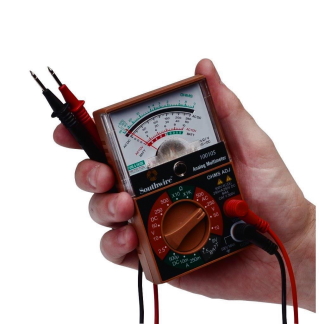
Analog multimeter working principle
An analog or analogue multimeter is one of the most used tools in the industry. It has been used for many years in order to check amps, volts, etc. They are extremely flexible and enable very many faults to be found in an electronic circuit. Analog multimeter working principle is very easy to learn. Due to the digital multimeters used, the analog on many places they use this because it is very simple to use.
What is an analogue test meter?
In the analogue tester measurements are made use of a moving coil meter. This is an analogue form of display that uses the deflection of an indicator needle to indicate the level of the measurement being made. In which the basic meter used in an analogue meter is a moving coil meter and this deflects from its rest position increasingly as the measurement quantity increases. When it is tested using the analogue meter which contains a single meter and movement, a series of parallel resistors were used to provide the correct ranges.
 It has a large rotary switch in the centre of the front panel under the meter that was used to select the required range. You can use some different connections to check the amps, volts and the current passing. Analog multimeters selection guide is very helpful in learning about these meters.
It has a large rotary switch in the centre of the front panel under the meter that was used to select the required range. You can use some different connections to check the amps, volts and the current passing. Analog multimeters selection guide is very helpful in learning about these meters.
Meter reading parallax errors
One cause of errors on an analogue multimeter is that it can give parallax errors. It is an important concept for analog multimeter basics and measuring. People with lots of experience in handling these analog meters can identify it effectively.
Analog multimeter ranges
Usually these analog meters are used to see different range of voltages:
 DC Voltage: 2.5V, 10V, 25V, 100V, 250V, 1000V
DC Voltage: 2.5V, 10V, 25V, 100V, 250V, 1000V- AC voltage: 10V, 25V, 100V, 250V, 1000V
- DC Current: 50µA, 1mA 10mW, 100mA
- Resistance: R, 100R, 10 000R
Multimeter operation
The use of these analog meters is quite easy and it is very helpful in learning how to make voltage, current and resistance measurements. It is only necessary to test in various instruments to understand it better. It is not necessary to install batteries to check for the current and voltages.
Insert the probes into the correct connections; there are more connections in it. Set the switch to the correct measurement type and fix up the range. Range on the multimeter can be reduced later if necessary. It helps to prevent the meter being overloaded and any possible damage to the movement of the meter itself. It is optimized to give the better ranging, so that the maximum deflection of the meter can be gained. In this way the most accurate reading can be obtained.
It is a wise precaution to place the probes into the voltage measurement sockets and turn the range to maximum voltage. If you accidentally connect with the wrong one, it won’t cause any damage. The analog meter is sensitive to the amount of current flow in a circuit. But the accuracy level of reading it gives is quite good.
